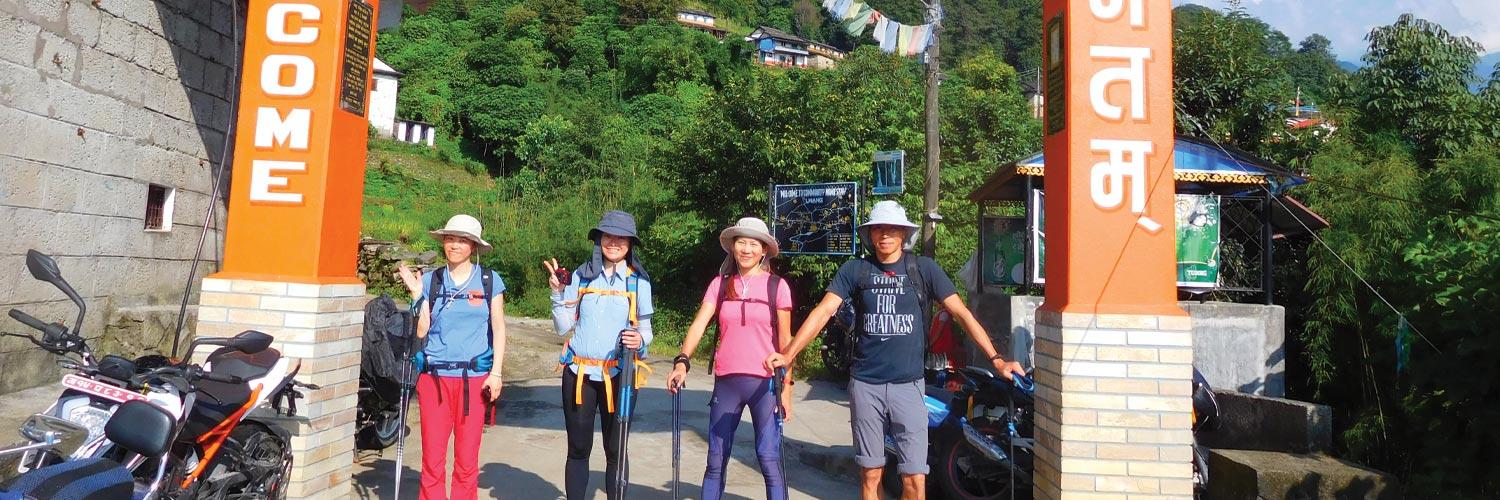Nestled in the Annapurna region of Nepal, the Mardi Himal Trek is a hidden gem that offers breathtaking views of the Himalayas, lush forests, and serene landscapes. Unlike its more popular counterparts, such as the Annapurna Circuit or Everest Base Camp, the Mardi Himal Trek remains relatively untouched, making it a perfect choice for trekkers seeking solitude and unspoiled beauty. However, to make the most of this incredible journey, timing is everything. Best time to trek Mardi Himal and what each season has to offer.
1. Spring (March to May) – The Best Time to Trek Mardi Himal
Spring is widely regarded as the best time to trek Mardi Himal. The weather during this season is stable, with clear skies and moderate temperatures, making it ideal for trekking. Here’s why spring is so popular:
-
Pleasant Weather: Daytime temperatures range from 10°C to 20°C (50°F to 68°F), while nights are cooler but not freezing. This makes for comfortable trekking conditions.
-
Blooming Rhododendrons: The forests along the trail come alive with vibrant rhododendron blooms, painting the landscape in shades of red, pink, and white.
-
Clear Mountain Views: The skies are generally clear, offering stunning views of Mardi Himal, Machapuchare (Fishtail), Annapurna South, and Hiunchuli.
-
Fewer Crowds: While spring is a popular time, the Mardi Himal Trek is still less crowded compared to other treks in the region.
2. Autumn (September to November) – Another Great Option
Autumn is another excellent time to trek Mardi Himal. After the monsoon season, the skies clear up, and the weather becomes dry and stable. Here’s what makes autumn special:
-
Crystal-Clear Views: The post-monsoon air is crisp and clear, providing unparalleled views of the Himalayan peaks.
-
Moderate Temperatures: Daytime temperatures range from 10°C to 18°C (50°F to 64°F), while nights are cooler. It’s perfect for trekking during the day and cozy evenings in teahouses.
-
Festive Atmosphere: Autumn coincides with major Nepalese festivals like Dashain and Tihar, offering trekkers a chance to experience local culture and traditions.
3. Winter (December to February) – For the Brave and Adventurous
Winter trekking on Mardi Himal is possible but comes with its own set of challenges. This season is best suited for experienced trekkers who are prepared for colder conditions. Here’s what to expect:
-
Cold Temperatures: Daytime temperatures can drop to 0°C (32°F) or lower, especially at higher altitudes. Nights are freezing, so proper gear is essential.
-
Snow-Capped Landscapes: The trail and surrounding peaks are covered in snow, creating a magical winter wonderland.
-
Fewer Trekkers: If you’re looking for solitude, winter is the perfect time, as the trails are much quieter.
-
Shorter Days: Be prepared for shorter daylight hours, which means you’ll need to plan your trekking days accordingly.
4. Monsoon (June to August) – Not Recommended
The monsoon season is generally not recommended for trekking in Nepal, including the Mardi Himal Trek. Here’s why:
-
Heavy Rainfall: The trails can become slippery and muddy, making trekking difficult and potentially dangerous.
-
Leeches and Insects: The wet conditions bring out leeches and other insects, which can be a nuisance.
-
Cloudy Skies: The mountain views are often obscured by clouds and fog, diminishing the overall experience.
-
Landslide Risks: The heavy rains increase the risk of landslides, particularly in the lower regions of the trek.
Final Thoughts
The Mardi Himal Trek is a rewarding adventure that can be enjoyed year-round, but the best time to trek is undoubtedly during spring (March to May) and autumn (September to November). These seasons offer the perfect combination of pleasant weather, clear skies, and stunning landscapes. If you’re up for a challenge and want to experience the trek in a unique way, winter can also be a great option, but make sure you’re well-prepared for the cold.
No matter when you choose to go, the Mardi Himal Trek promises an unforgettable journey through some of Nepal’s most beautiful and untouched landscapes. So pack your bags, lace up your boots, and get ready to explore the hidden treasures of the Himalayas! Join Us
Author: bestheritagetour.com
Date: 20th February, 2025

